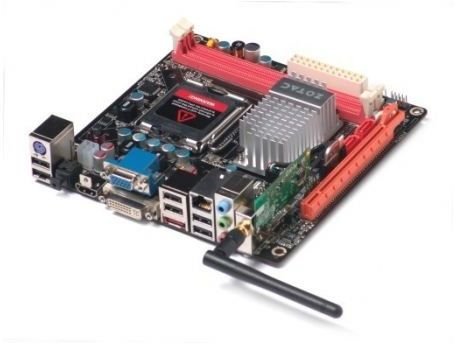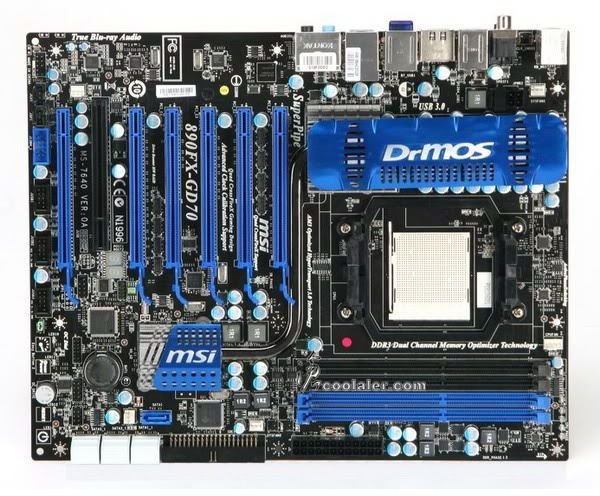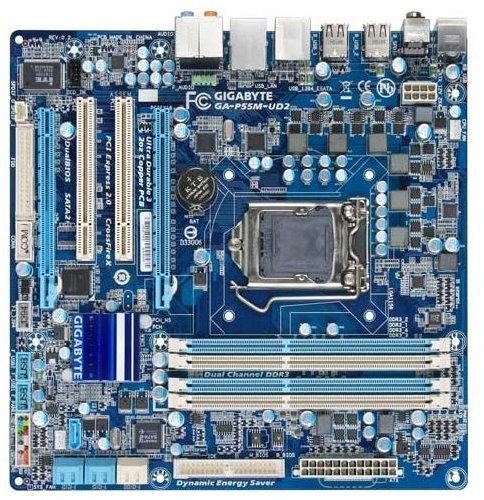The Definitive Motherboard Guide
The Complete Motherboard Guide
The motherboard is the unsung hero of every computer. Motherboards have no major effect on a computer’s performance, and so they are not as well loved as more easily measured components like video cards and processors. However, the motherboard is the foundation of every computer. It determines what components you will be able to use and dictates how those components will operate.
It therefor of extreme importance to make sure you purchase a motherboard that fits your needs when you are building or updating a PC. In this guide we’ll take a look at the different decisions you’ll have to make when choosing a motherboard.
Chipsets
A chipset is a hardware design that motherboards follow. Chipsets are actually designed by Intel and AMD for their specific processors, and those designs are then handed over to motherboard manufacturers like ASUS and Gigabyte. The manufacturers then create motherboard products based off the chipset. There is quite a bit of wiggle room given to the manufacturers, so two motherboards with the same chipset may have numerous different features. The core chipset features, however – the processor socket, RAM support, the integrated graphics processor (if any) and the northbridge/southbridge - remain the same.
If you want interested in an Intel processor you will need to consider a wide range of chipsets, as there is a great deal of diversity in Intel’s product line. The most important variable to consider is the processor socket. The processor socket that the chipset supports determines what Intel processors you can use. LGA 775 sockets are for Core 2 Duo and Quad processors. LGA 1156 is for Core i3, i5 and some i7s. LGA 1366 is for high-end core i7s.
Modern Intel chipsets include:
- H55 (budget oriented)
- H57 (budget oriented)
- P55 (mainstream)
- X58 (high-performance/workstation)
AMD fans have it a little easier. AMD has been using variations on the same socket for some time now, so there is a lot more compatibility between different chipsets and processors. Our article on AMD socket compatibility will provide more details. AMD chipsets always have integrated graphics, but some have better graphics than others. This will be an important consideration for some users.
Modern AMD chipsets include:
- AMD 780G (budget oriented)
- AMD 785G (budget oriented)
- AMD 790X/FX/GX (mainstream)
- AMD 890FX/GX (mainstream)
Choosing the Size

The size of the motherboard you purchase will have a big impact on how your computer can be built. Generally speaking, bigger motherboards can fit more components. However, they also require larger cases. Motherboard sizes are standardized, so you will have a good idea of how big a motherboard is as long as you know the motherboard’s form factor.
Mini-ITX: A small 6.7” x 6.7” form factor that is great for small desktop computers and home theater PCs. Mini-ITX boards usually only have room for a processor, two RAM slots, and a single PCI express slot.
MicroATX: A mid-size 9.6” x 9.6” form factor used by many desktop PCs. MicroATX used to be considered quite small, but it is becoming more popular. These boards usually have room for a processor, four RAM slots, one PCI express slot and two PCI slots.
ATX: The standard 12” x 9.6” form factor that has been in use for over a decade, ATX is great for desktop computers and gaming computers. ATX boards have room for four or more RAM slots and offer up to four PCI express slots.
EATX: A large 12” x 13” form factor that is rather rare outside of servers and workstations. EATX boards have a lot of room, so they often include a hoard of RAM and PCI slots. Some EATX boards even provide support for multiple processors. EATX boards are so big that they won’t fit in many PC cases, so be sure your case supports EATX before you buy one of these.
Ports and Connections

When you are buying a motherboard you need to keep an eye on the ports and connections that the motherboard offers. Purchasing a new motherboard, only to find that it is missing a port you need, can be a major frustration. Here are some common ports to look out for.
DVI: This remains the most common computer display connection. Virtually every modern motherboard comes with a DVI port.
eSATA: The e in eSATA stands for external. An eSATA port is literally a normal SATA hard drive connection that is available for connection to external devices. This is a very useful port if you often use external storage.
FireWire: Also known as IEEE1394, FireWire is a method of connecting devices that is focused on high performance. It is commonly used by digital photography and video equipment, and is also sometimes used by external hard drives.
HDMI: This display connection, pioneered by HDTVs, is becoming common on computer displays as well. It isn’t absolutely essential if you don’t have an HDMI display, but can be useful in case you decide to upgrade in the future.
S/PDIF: This connection is used to output digital audio to some audio equipment. It isn’t needed for use with standard desktop PC speakers, but will be useful if you want to hook up a high-end sound system.
USB: USB is the most popular method of connecting devices to a computer. Everything from keyboards to cell phones needs USB ports to connect to your PC, so you’ll want as many of these as possible.
VGA: This is an old-school display connection. It isn’t common any longer, and is only useful for connecting to very old monitors.
Other Features to Consider
Besides what has already been covered, another important feature to think about is audio. Most motherboards come with on board audio, but the quality can vary a great deal. Realtek integrated audio is generally considered the best. If possible, find a motherboard with 8 channel audio, although 6 channel will do for many users.
If you want to use RAID, but you don’t want to use a RAID controller card, you’ll need to pay attention to motherboard RAID support. Different motherboards will support different configurations, and some low-end motherboards may not support RAID at all.
